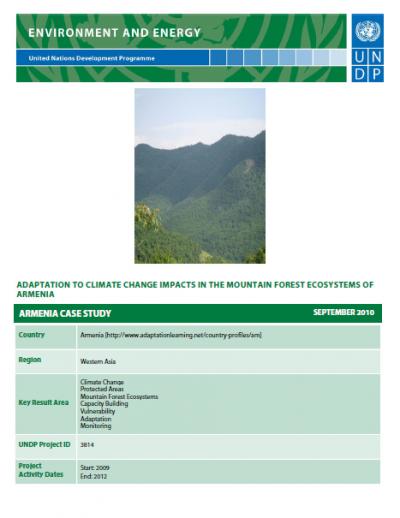UNDP-ALM Case Study - Armenia - September 2010

Abstract: Containing more than half the region’s floral diversity and over 300 species of trees and bushes, Armenia’s forest ecosystems form a vital eco-corridor that extends through the Eastern Lesser Caucasus. Although these forests are a biodiversity hotspot and a global conservation priority, the region has been identified as critically vulnerable, especially to the risks posed by climate change. Given the significant value of preserving the area’s biodiversity, this project is working to enhance the forest’s resilience through improving ecological restoration, preventing forest fires and fighting pests. Targeting 75,000 hectares of land, UNDP, in cooperation with scientists, government officials, forestry enterprises, and local communities, is working to preserve the forests. Efforts are also being made to support the local communities to participate in and benefit from the adaptation efforts. By integrating measures to adapt to climate change, the project is also responding to anticipated environmental changes that will occur over the next 25 to 50-years. The immediate focus of pilot adaptation measures are in the Syunik region in south-east of Armenia, but the project may be of broader relevance to all mountain forest ecosystems in Armenia. Key lessons learned from the project to date indicate the need for engagement of stakeholders at all levels and throughout the project cycle based on assessment of their needs and capacities. Lessons also recognise the value of evaluation at different stages of the project, inclusion of international experiences and expertise, and development of institutional capacities and policy frameworks at both local and national levels.